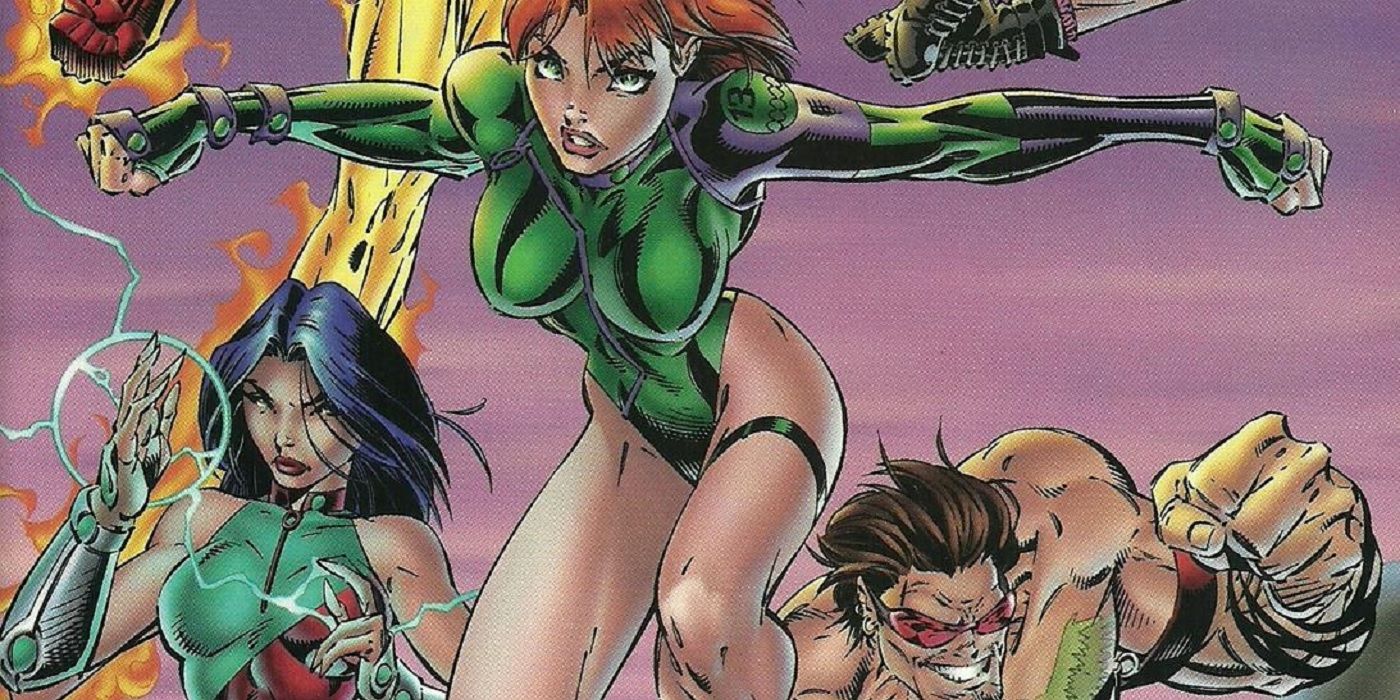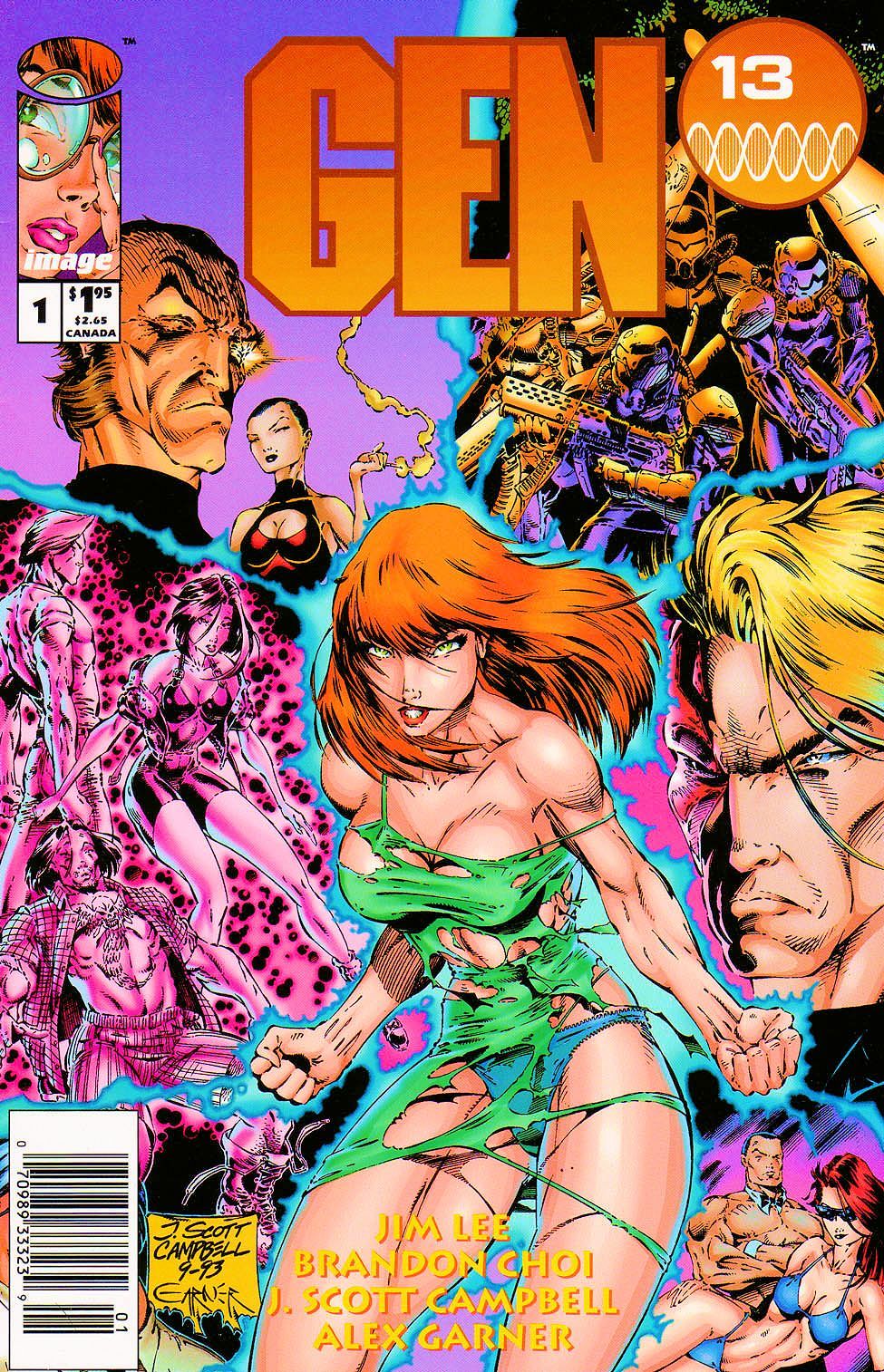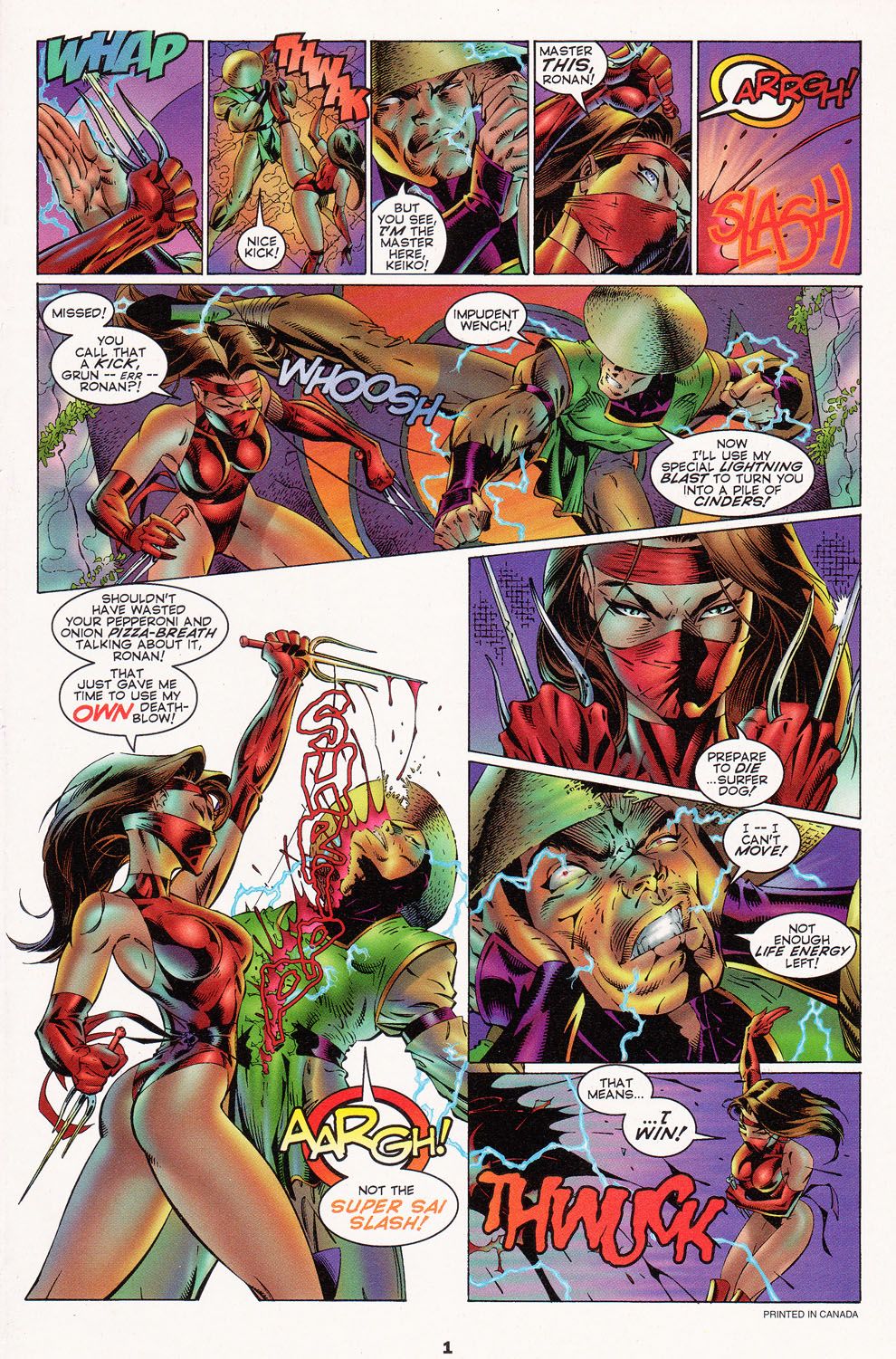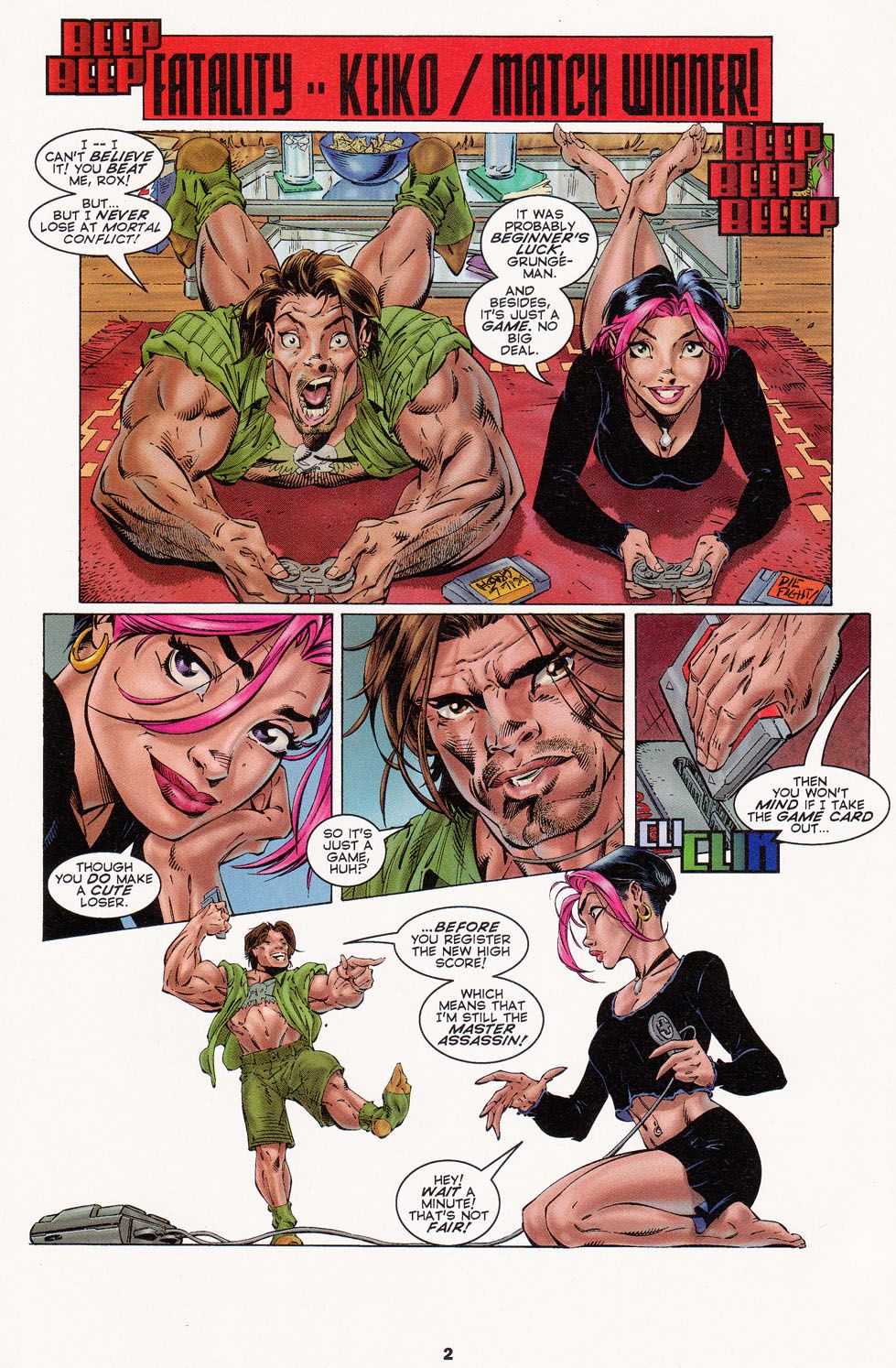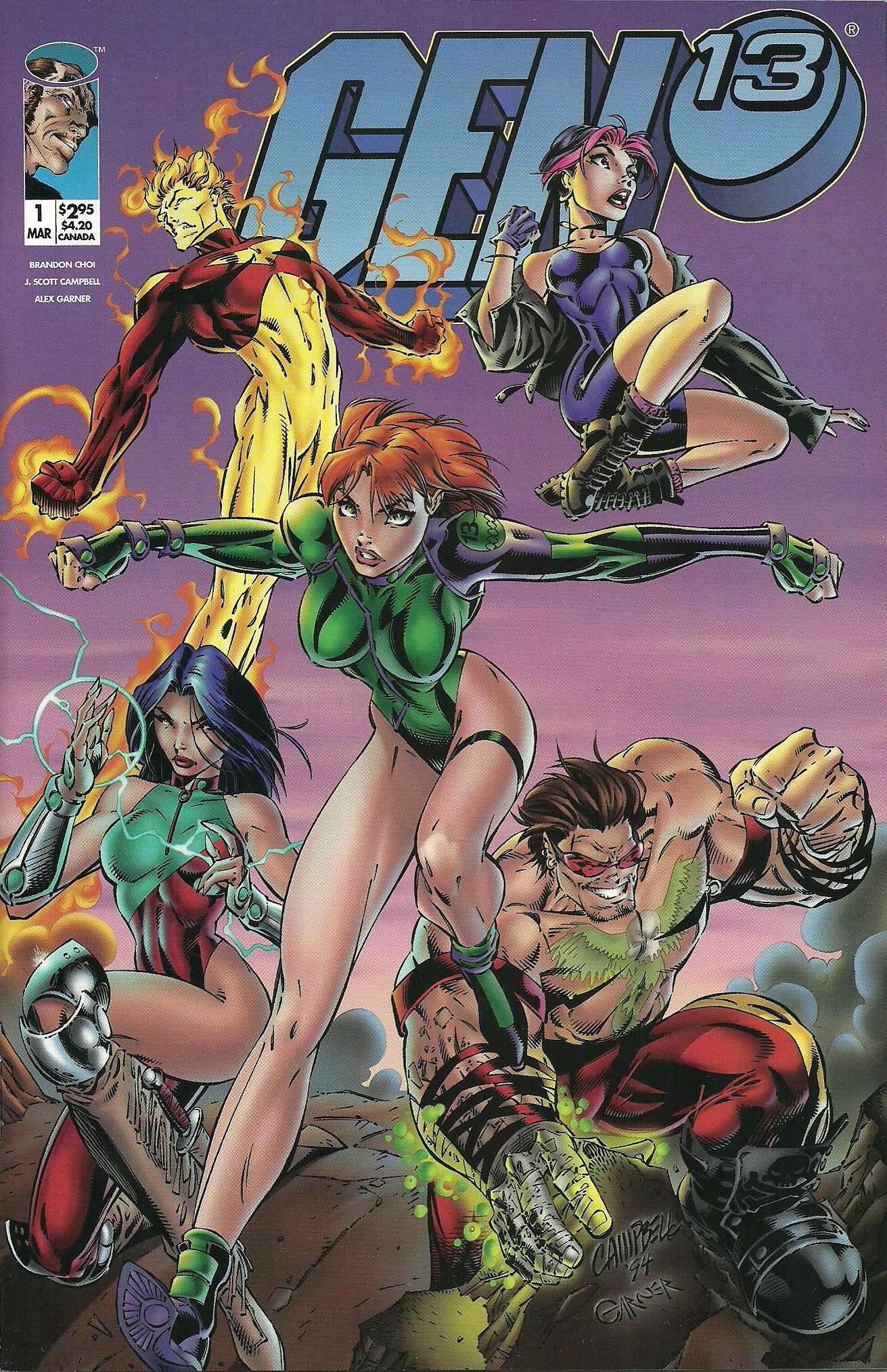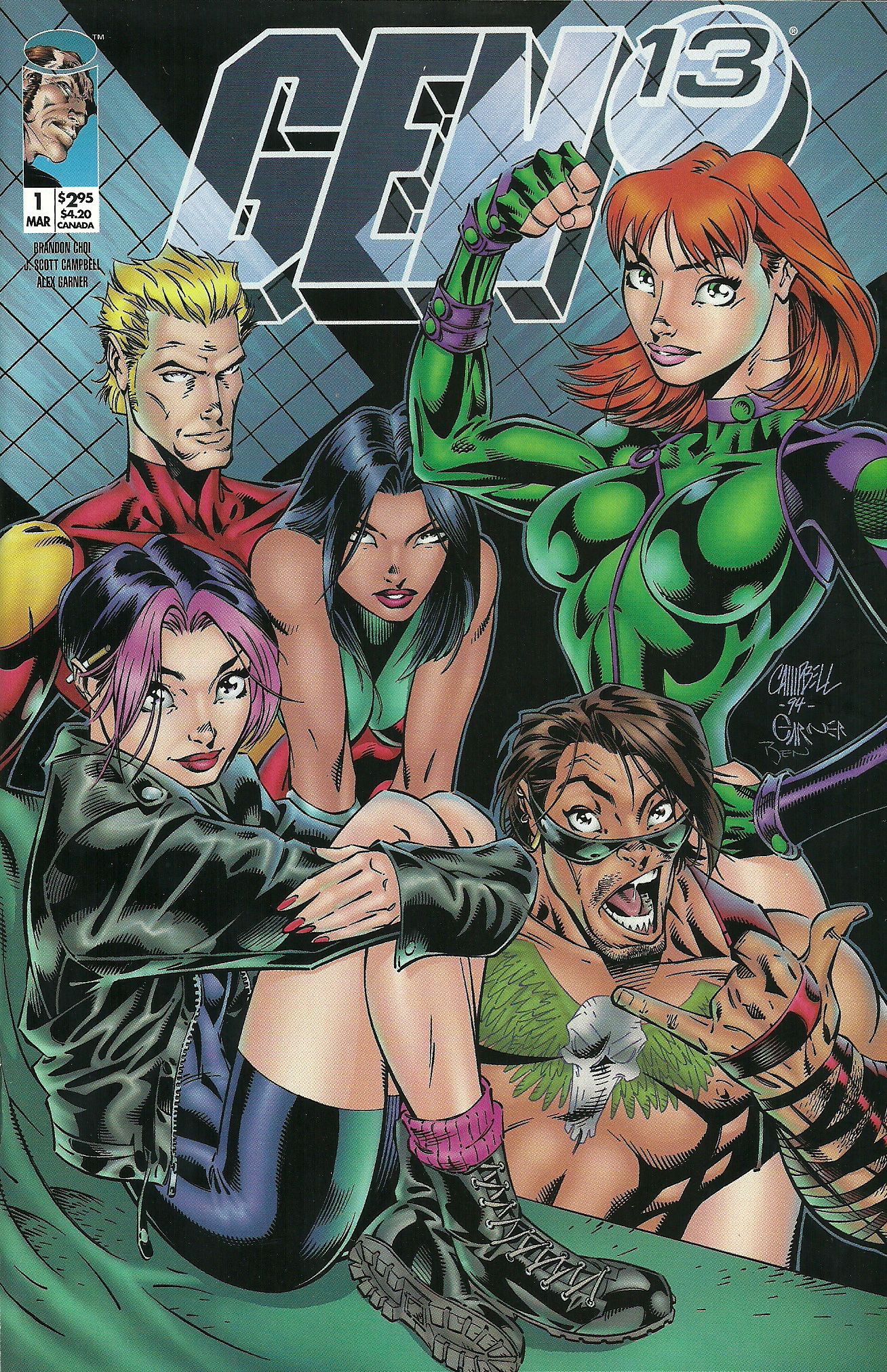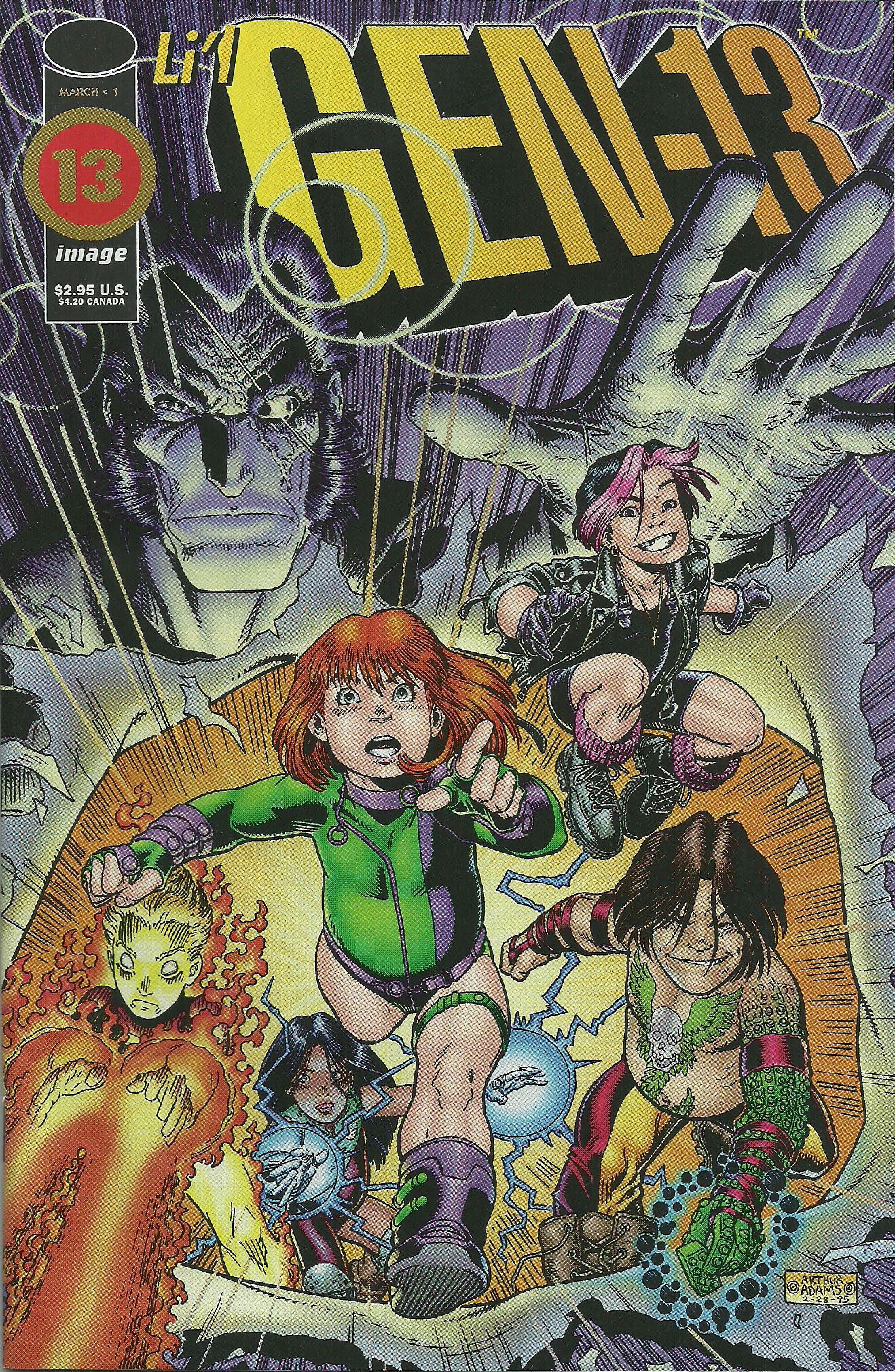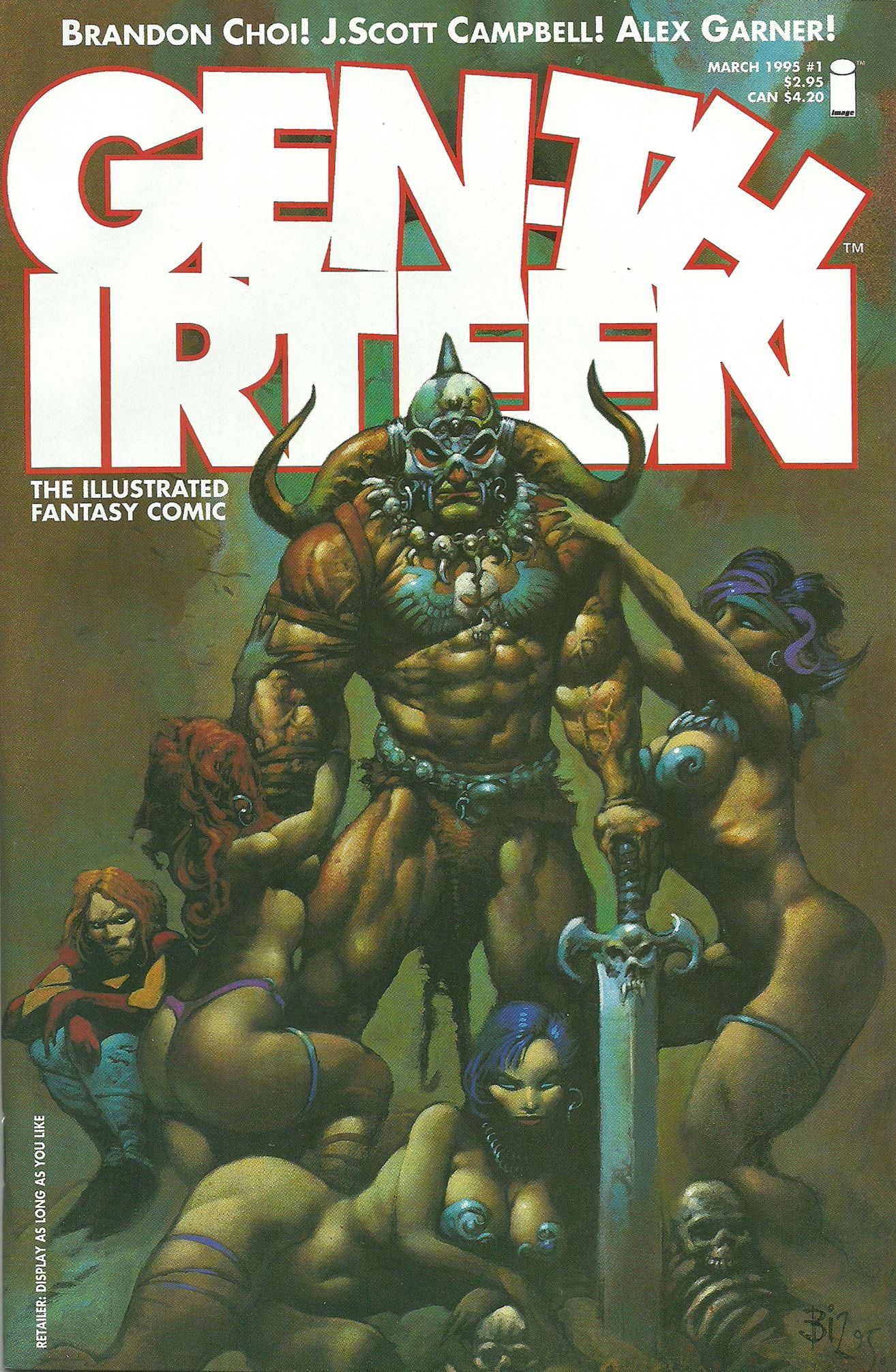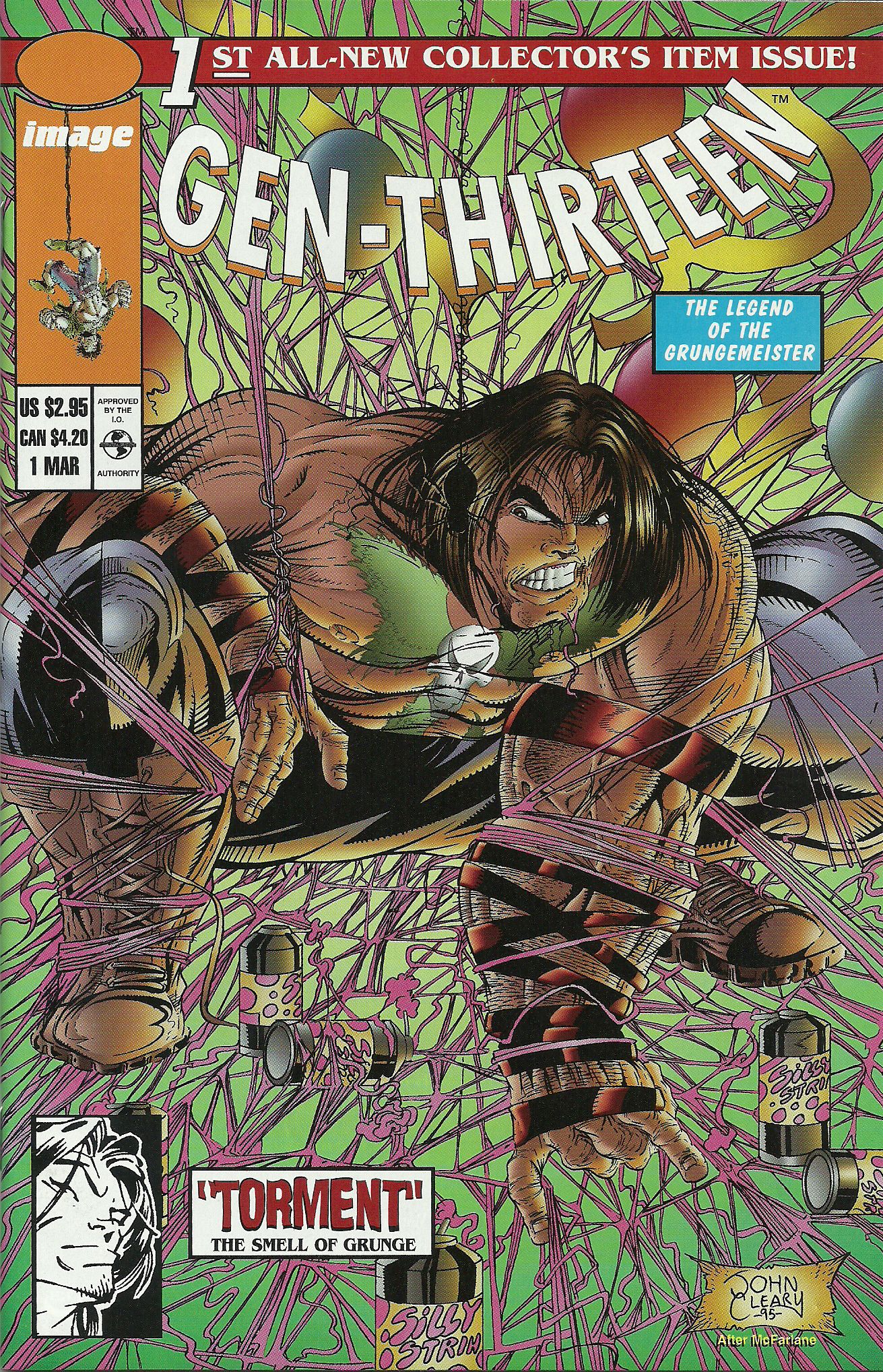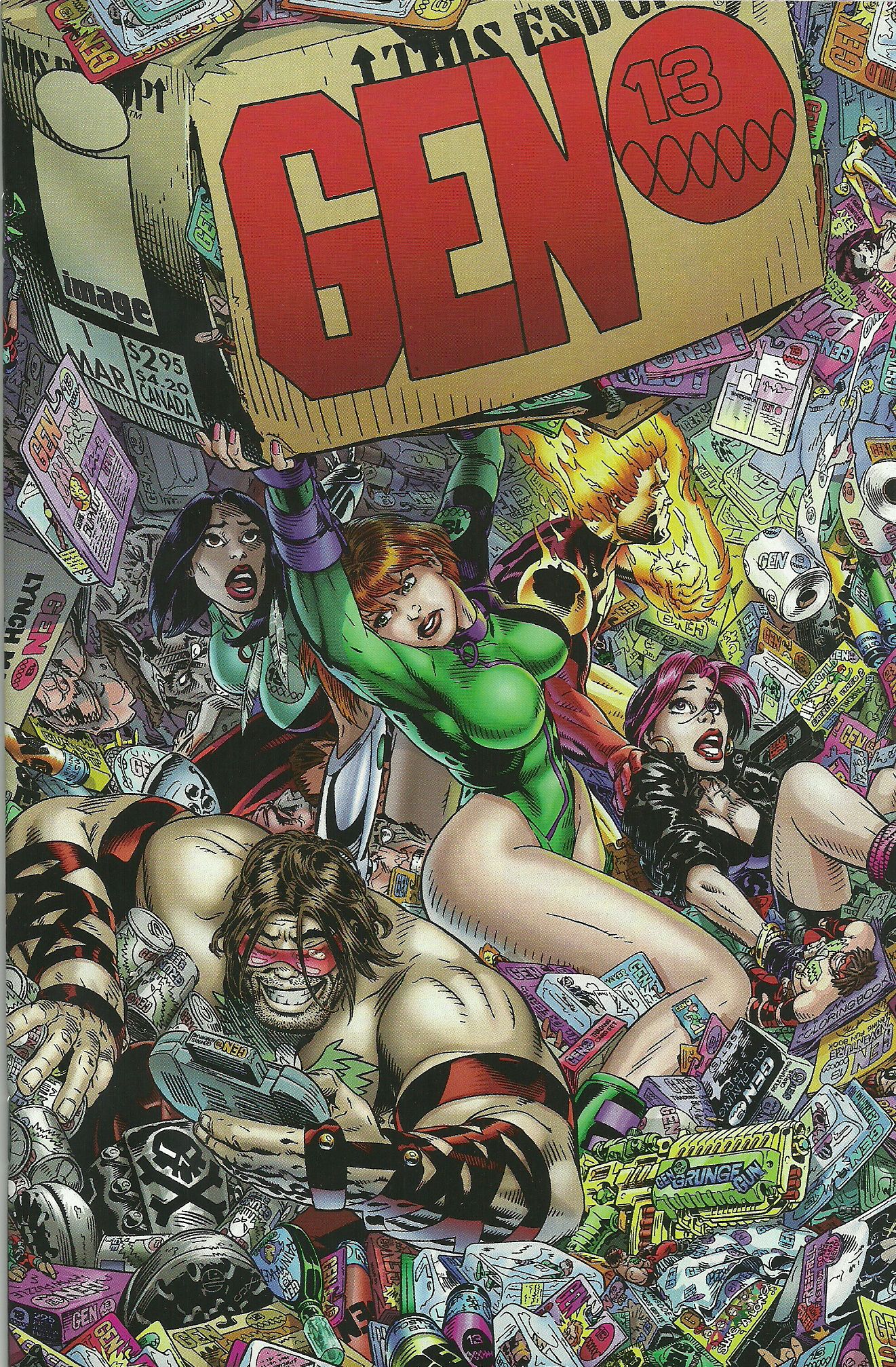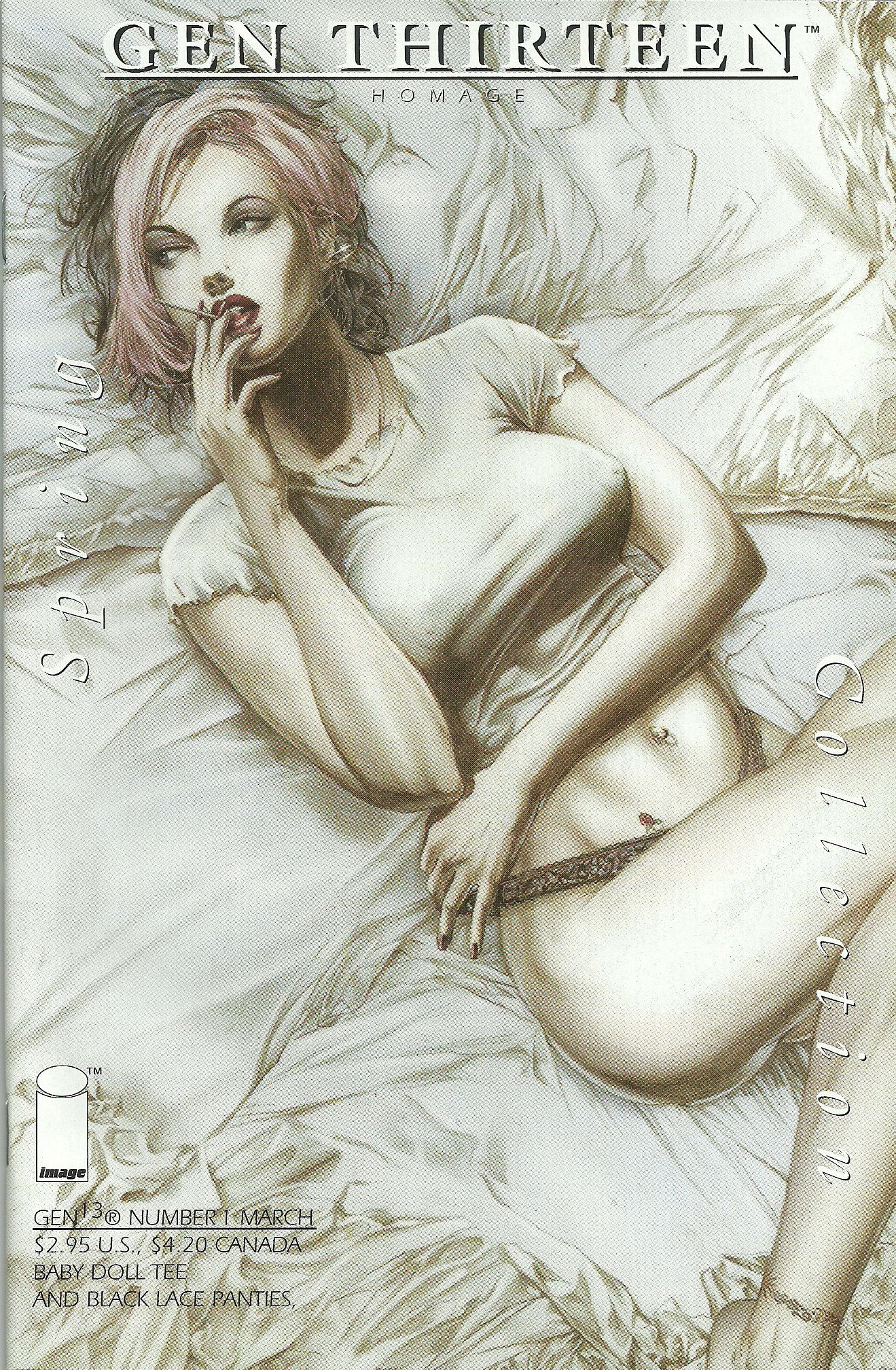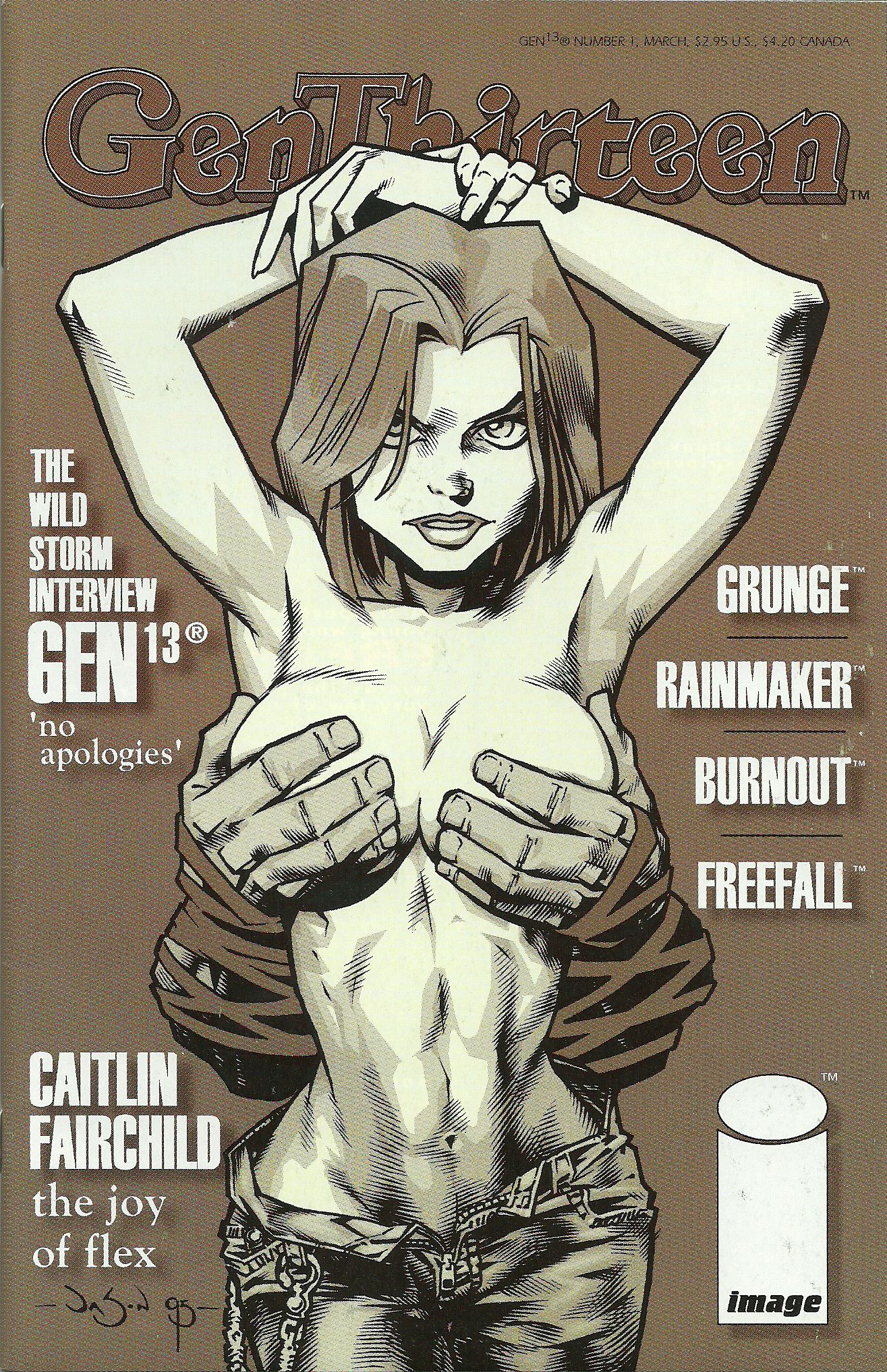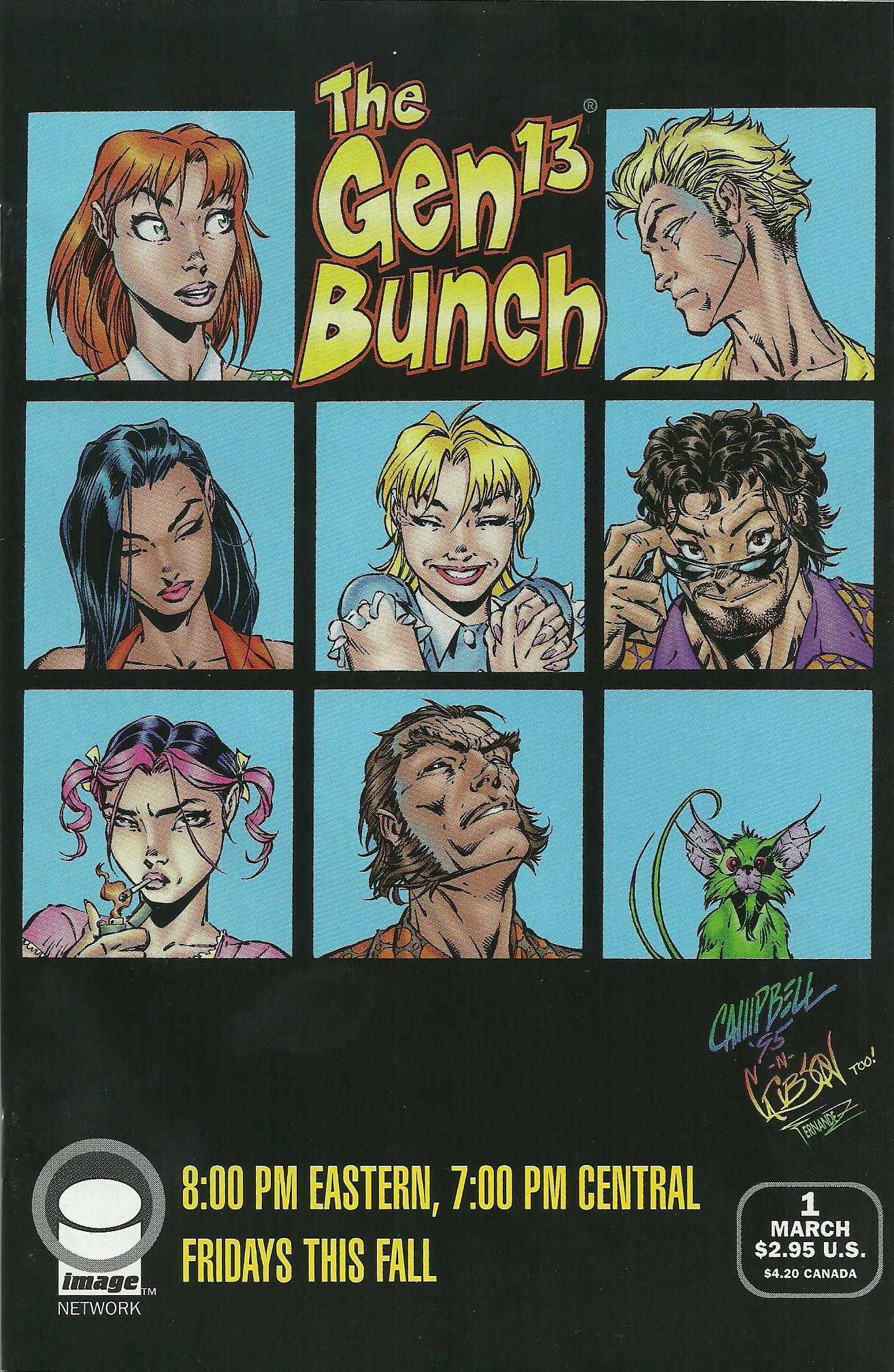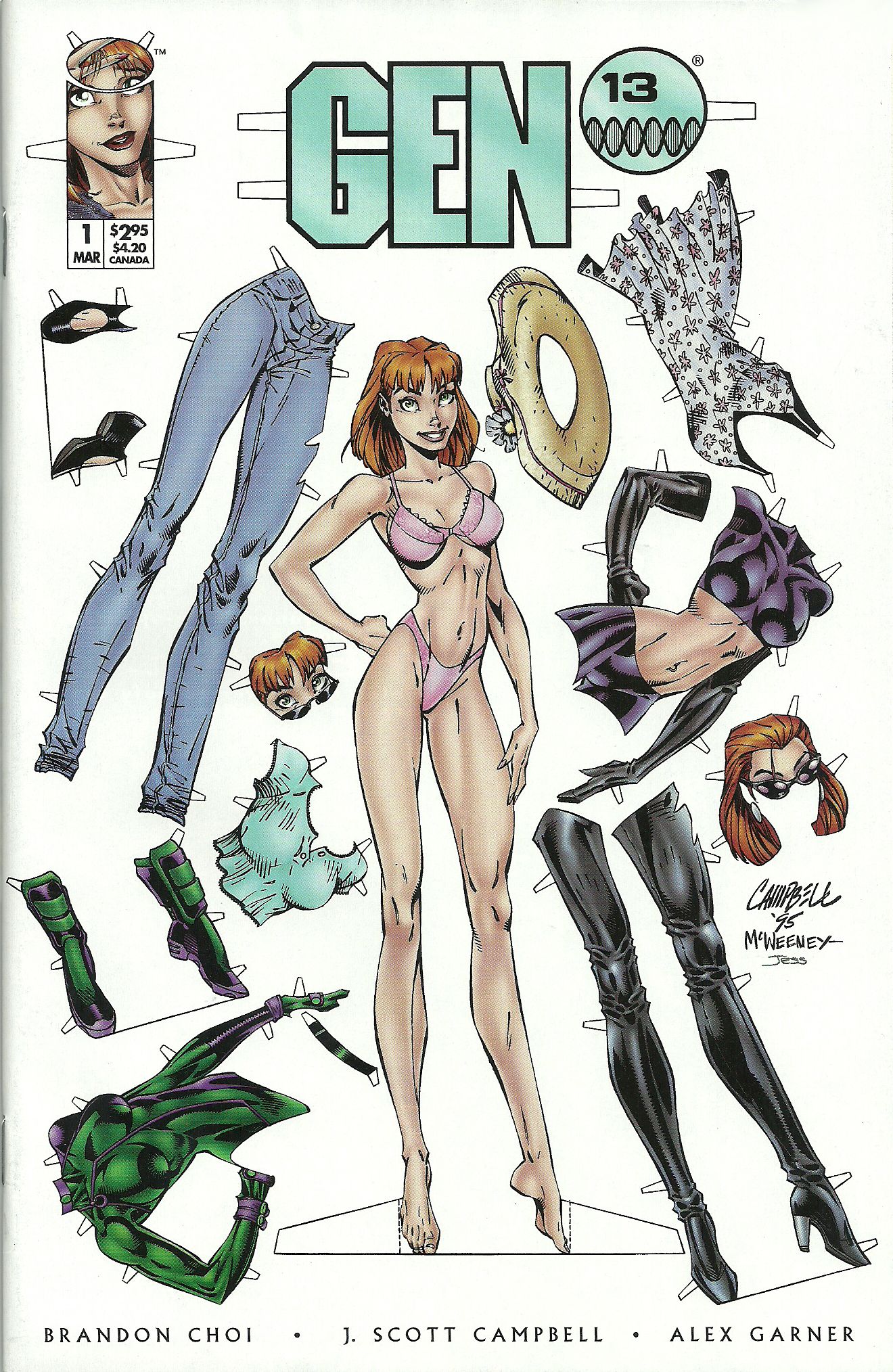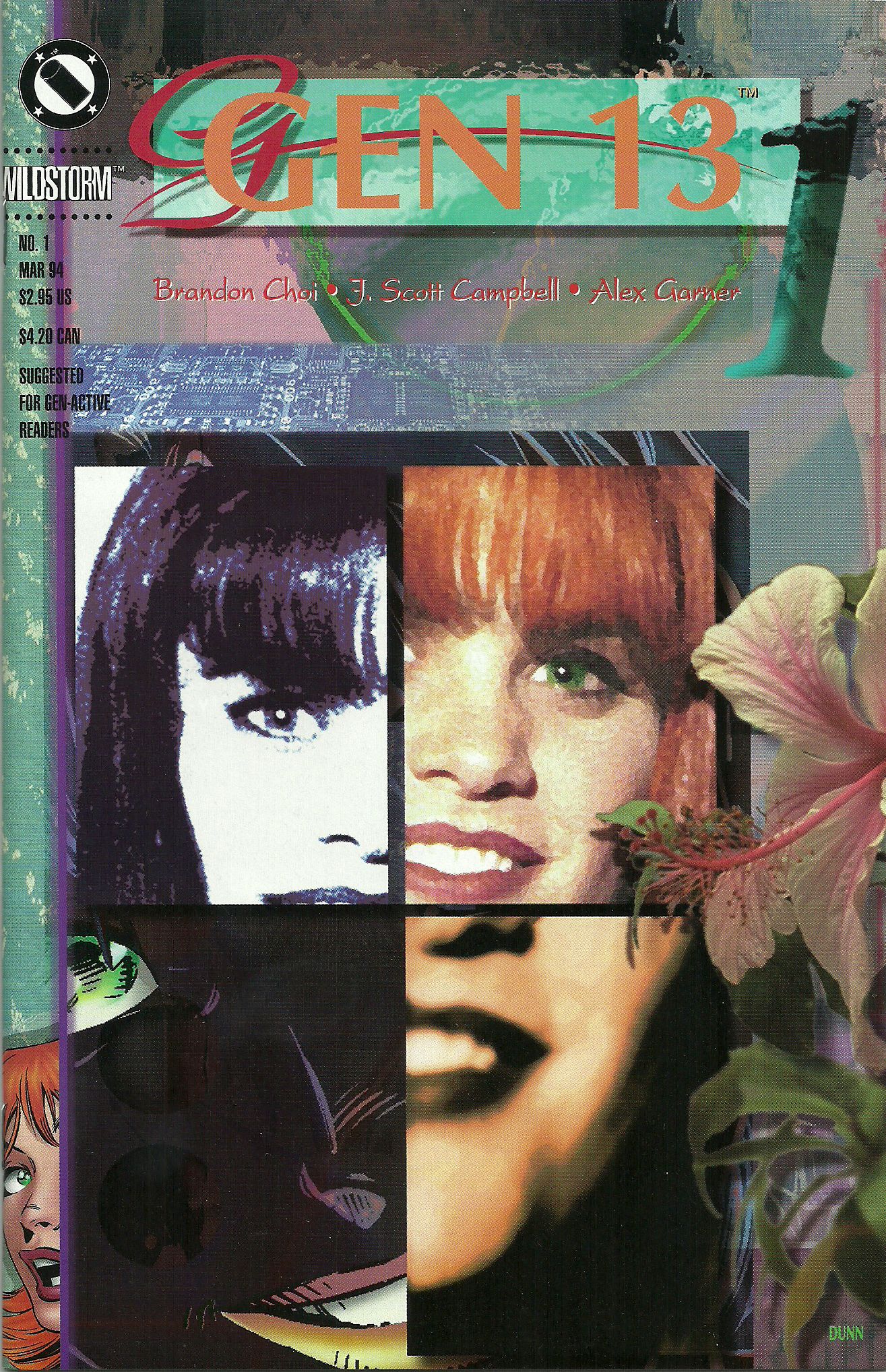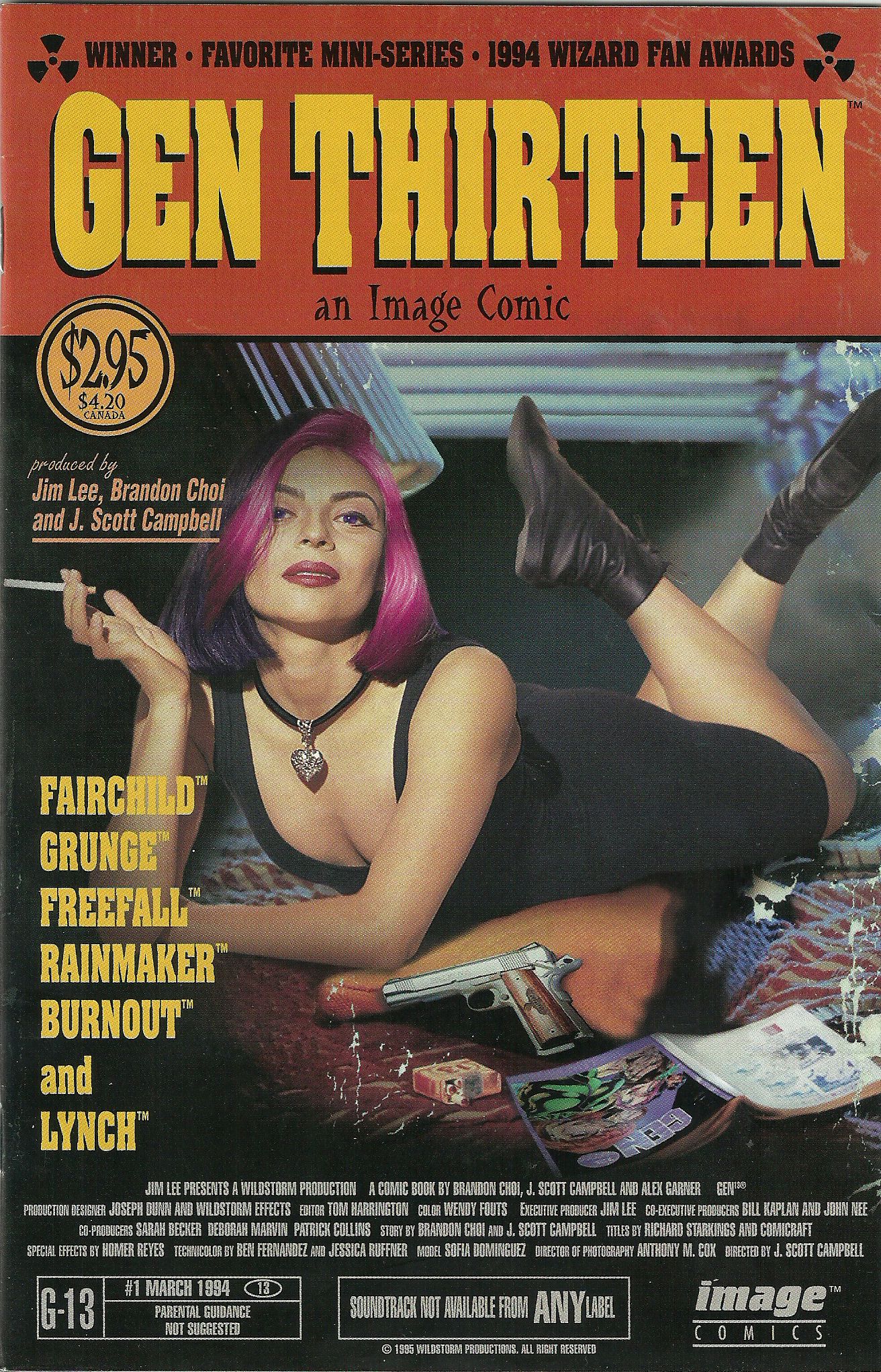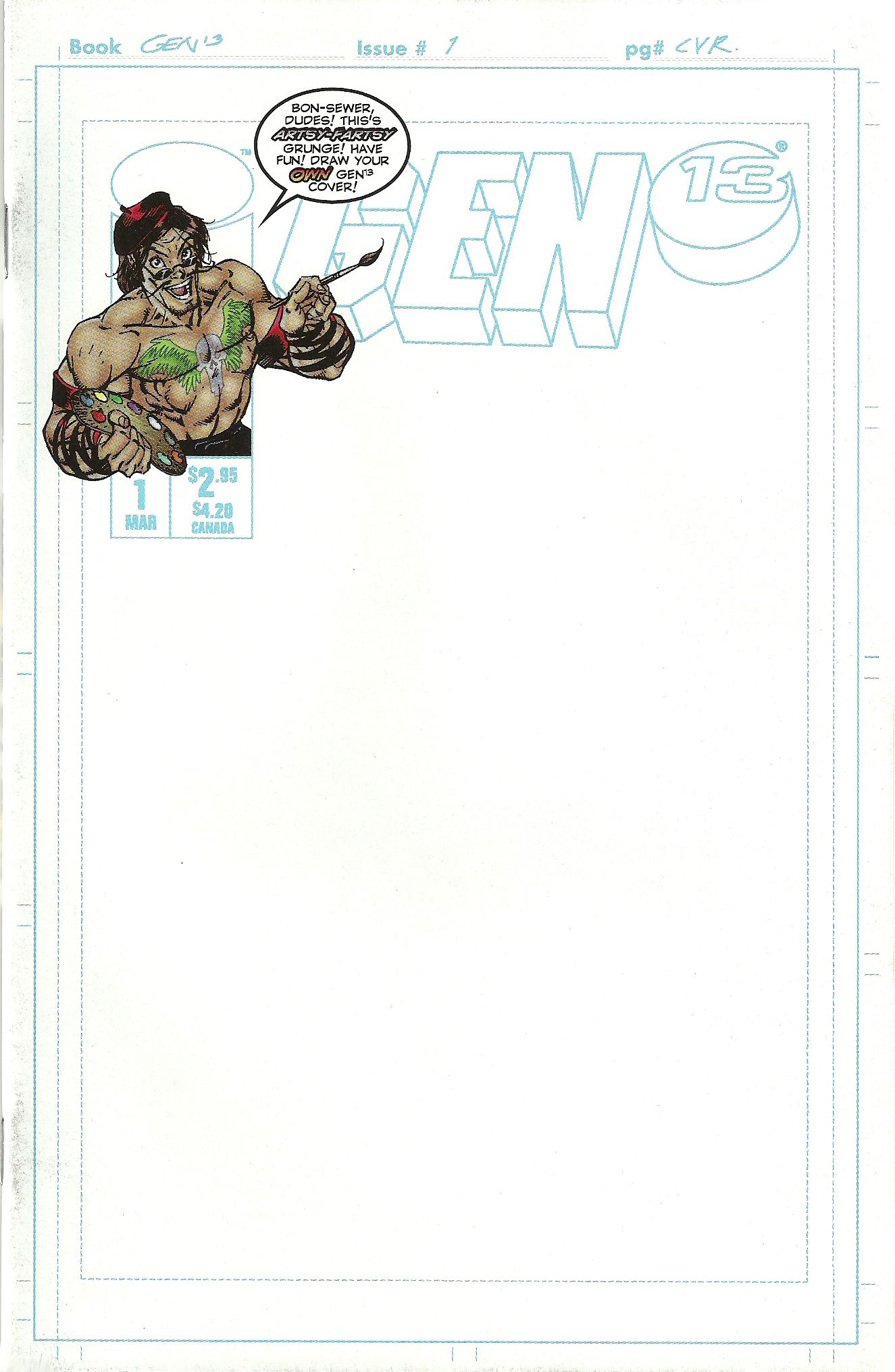This is "Look Back," a feature that I plan to do for at least all of 2019 and possibly beyond that (and possibly forget about in a week, who knows?). The concept is that every week (I'll probably be skipping the four fifth weeks in the year, but maybe not) of a month, I will spotlight a single issue of a comic book that came out in the past and talk about that issue (often in terms of a larger scale, like the series overall, etc.). Each week will be a look at a comic book from a different year that came out the same month X amount of years ago. The first week of the month looks at a book that came out this month ten years ago. The second week looks at a book that came out this month 25 years ago. The third week looks at a book that came out this month 50 years ago. The fourth week looks at a book that came out this month 75 years ago.
Today, we look at the March 1995 launch of the Gen 13 ongoing series by J. Scott Campbell, Brandon Choi and Alex Garner, specifically the 13 covers for the book (perfect for Friday the 13th!).
The other day, I wrote about how there was nearly a Batman/Gen 13 crossover in 1996, and I'll repeat a bit about the set-up for the 1995 Gen 13 launch.
In 1994, J. Scott Campbell burst on to the comic book scene as an instant superstar with his Gen 13 miniseries for Jim Lee's Wildstorm (story by Jim Lee and Brandon Choi and inks by Alex Garner)
The miniseries was a big hit and in 1995, an ongoing series by Choi, Campbell and Garner was launched.
Variant covers had become a common occurrence in the comic book world by 1995, of course, but Gen 13 #1 was a whole other story, as they decided to launch with THIRTEEN total covers! It was like something no one had seen before. J. Scott Campbell, like a lot of guys in their 20s in the 1990s, was a bit of a pop culture sponge, which you can see with the very first pages of 1995's Gen 13 #1, homaging Mortal Kombat (with a little bit of an Elektra riff, as well)...
And so the variants for Gen 13 #1 were filled with homages to not just comic books but to other big pop culture influences from the era.
First off, Campbell did two main covers (this was very typical for the era)...
Then Arthur Adams (a huge influence on Campbell) did a parody of his X-Babies cover for an X-Men Annual (that was, itself, an homage to Giant-Size X-Men #1)...
Simon Bisley homaged Frank Frazetta...
John Cleary homaged Todd McFarlane...
Michael Golden just did his own thing...
Michael Lopez homaged a Victoria's Secret catalog...
Jason Pearson, in which was most likely the most notable variant at the time, parodied the then-recent Janet Jackson Rolling Stone cover...
Campbell parodied the Brady Bunch (it is crazy how big the Brady Bunch was for people in their 20s in the 1990s)....
Campbell then did a paper doll cover...
Joe Dunn did a Death: The High Cost of Living/Dave McKean homage...
This Pulp Fiction homage used model Sofia Dominguez as Roxy...
ve
And finally, Campbell did a variation on what we now call blank covers with a "Do It Yourself" cover...
They did a really nice job with these covers.
Nowadays, 13 covers is a LIGHT amount of covers for a new Marvel project, but this was a big deal at the time. A game-changer in the variant cover field, if you would.
Thanks to the Entertainment Nut for the great scans of the covers (not a lot of good ones out there).
If you folks have any suggestions for March (or any other later months) 2010, 1995, 1970 and 1945 comic books for me to spotlight, drop me a line at brianc@cbr.com! Here is the guide, though, for the cover dates of books so that you can make suggestions for books that actually came out in the correct month. Generally speaking, the traditional amount of time between the cover date and the release date of a comic book throughout most of comic history has been two months (it was three months at times, but not during the times we're discussing here). So the comic books will have a cover date that is two months ahead of the actual release date (so October for a book that came out in August). Obviously, it is easier to tell when a book from 10 years ago was released, since there was internet coverage of books back then.

